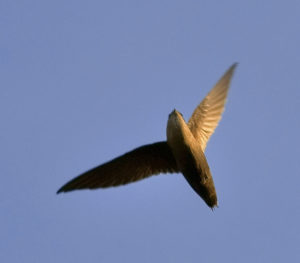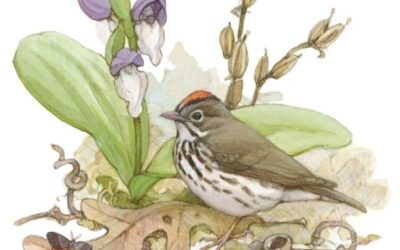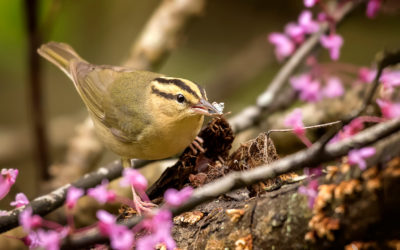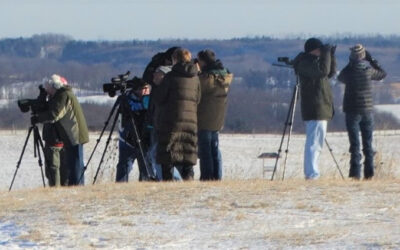Ohio Provides Critical Bird Habitat
Ohio is blessed with a geographic orientation that brings us lots of birds—both numbers and species. Our total species list, which includes extinct and extirpated birds, was 431 as of July, 2015. Of the five states which adjoin us, only Michigan’s list exceeds ours though Pennsylvania’s is close behind.
Perhaps more important than high species lists are the large numbers of certain birds that Ohio plays an integral role in supporting, either by being on their migratory path or by providing breeding habitat. And since our state has strong influences from all directions—prairies from the west, unglaciated Appalachian plateaus on the south and east, and of course our great inland sea to the north, Lake Erie—we are critical to a broad suite of species.
From gulls to sparrows, Ohio harbors some of the best habitats of any Midwestern state for birds. The examples are many. Nineteen species of gulls have been documented, an amazing total for ANY state, and this is in large part due to the importance of Lake Erie as a migratory pathway and wintering area. This fantastic lake also is critical to many species of shorebirds, and it is important that we work to insure that suitable habitats are provided at key periods of their passage. Of the almost 50 species of shorebirds that have occurred here, many have evolved a critical dependence on western Lake Erie habitats as stopover locale to rest and refuel for the incredible trans-global migrations they undertake.
Grassland Birds Find Habitat in Former Strip Mines
Surface coal extraction—strip mining—while rightly considered an ecological catastrophe has had an unexpected but fortuitous benefit in southeastern Ohio by creating enormous grasslands during “reclamation.” Many of us are familiar with The Wilds and the adjoining Ohio Power lands in Muskingum County, a good example of this sort of habitat. These grasslands have become key breeding areas for declining species such as the Henslow’s Sparrow, and consequently Ohio now supports some of the best remaining populations of grassland breeders in the Midwest. Of course, these sites are sensational for wintering birds, too, in particular raptors. And the hundreds of thousands of acres of reclaimed surface mines are large enough to have altered the wintering range of Golden Eagles and also attract huge numbers of Northern Harriers, Rough-legged Hawks, and Short-eared Owls.
Protecting Habitats to Preserve Bird Diversity
Protection of outlying or edge-of-range habitats is key to preserving genetic diversity, and Ohio has a very significant example of a disjunct habitat. Hemlock gorges such as those found in Hocking County, Mohican State Forest, and far northeastern Ohio are examples of a boreal habitat largely isolated from the core of this plant community far to the north. Coming along with these hemlocks are isolated southern populations of boreal breeders, such as Hermit Thrush; Blue-headed Vireo; Canada, Magnolia, and Blackburnian warblers; and Dark-eyed Junco. Not only are hemlock gorges one of Ohio’s most beautiful habitats, they are also one of the most biologically significant.
Between the hemlock gorges, the expanses of eastern deciduous forests that still cloak parts of Ohio, and other habitats, we support about 180 species of breeding birds annually. Of global importance is the group known as neotropical migratory birds. This group includes many perennial favorites such as Scarlet Tanager, Baltimore Oriole, and American Redstart. Over 60 species of neotropicals breed in Ohio and winter well to the south in places like Costa Rica, Nicaragua, and Columbia. Protecting Ohio habitats for these birds—like the icon species of the Society, Cerulean Warbler- becomes vital on a global scale.
Migrating Birds
Of course, the Buckeye state is legendary as a migratory pathway for migrants, and the Magee Marsh Wildlife Area bird trail is famous among birders far and wide. On a good May day, the trees and thickets here can seem to drip with birds, and even the mundane becomes extraordinary, such as the massive packs of Blue Jays winging overhead. Thousands of birders converge to observe the spectacular spring migration, and someone often turns up a rarity like Kirtland’s Warbler.
Birders Bring Sizable Economic Benefits
Birding brings dollars to the state, too, and our economic impact will only continue to increase. A study conducted by the U.S. Fish and Wildlife Service in 2006 estimated that 2.4 million Ohioans watched birds and that 3.5 million “wildlife watchers” spent $2 billion dollars here for equipment, supplies, and travel. Birders are a large, diverse, well educated, and environmentally aware group as a rule, and our potential collective clout is tremendous.
Ohio Ornithological Society members have contributed to many conservation projects through direct donations and the auctions, raffles, and “buy a bird” poster at OOS events. Major grants have gone for land acquisition at the Edge of Appalachia Preserve in Adams County and Meadowbrook Marsh Preserve in Erie. The Society has distributed over $60,000 from contributions and matching funds.
The Importance of Advocation
Of the roughly 200 species of birds that have been known to nest in Ohio, three are extinct—Passenger Pigeon, Carolina Parakeet, and Ivory-billed Woodpecker. Another five should be considered extirpated (locally extinct), although we once harbored established breeding populations—Greater Prairie-Chicken, Piping Plover, Bewick’s Wren, Golden-winged Warbler, and Bachman’s Sparrow. Merlin and Common Raven have recently bred in the state after long absences, but can hardly be considered established. Most of these species disappeared before there were people advocating their protection and taking steps to insure their survival. While their loss is a tragedy, it should also serve as a lesson as to the importance of birders banding together to form a collective voice that can speak for the birds.
The Importance of Chimney Swift Conservation
News & Events
Warblers & Wildflowers Weekend 2025
Registration is now open! Warblers and Wildflowers Weekend 2025 (April 25-27) at Shawnee State Park
SAVE THE DATE: Warblers & Wildflowers: April 25-27 2025
Mark your calendars and reserve a room for Warblers and Wildflowers at Shawnee State Park: April 25-27, 2025. Registration will open in late January.
2025 Winter Raptor Extravaganza at The Wilds!
Join the OOS for the 2025 Winter Raptor Extravaganza at The Wilds: January 18, 2025



